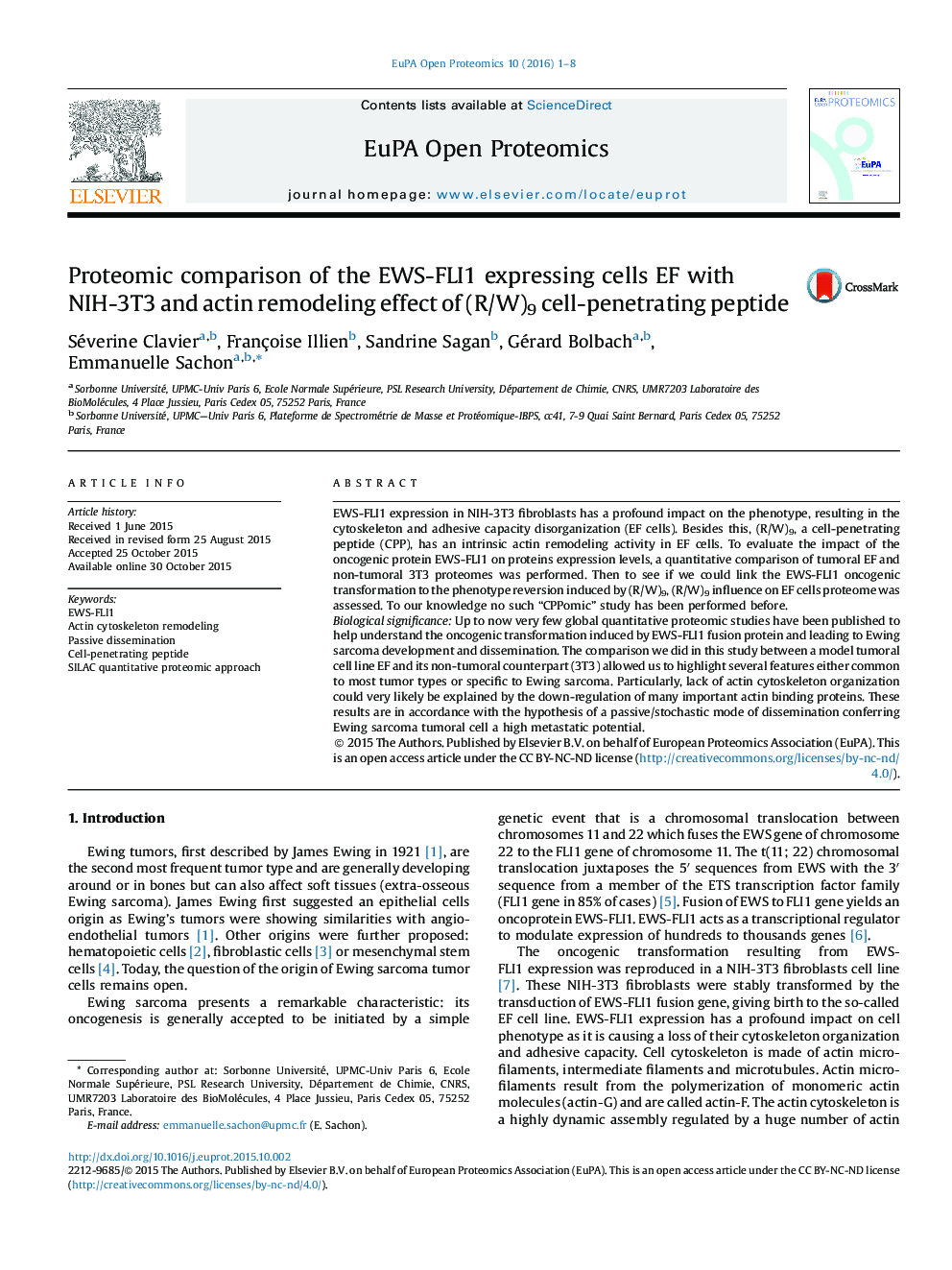| کد مقاله | کد نشریه | سال انتشار | مقاله انگلیسی | نسخه تمام متن |
|---|---|---|---|---|
| 1182886 | 1491799 | 2016 | 8 صفحه PDF | دانلود رایگان |

• Comparison of tumoral EF versus non-tumoral 3T3 fibroblasts (SILAC).
• Characterization of EWS-FLI1 fusion protein impact on protein expression levels.
• Down-regulation of actin binding proteins responsible for passive dissemination.
• Investigation of (R/W)9 cell-penetrating peptide actin remodeling activity.
• First proteomics study using a cell-penetrating peptide (R/W)9.
EWS-FLI1 expression in NIH-3T3 fibroblasts has a profound impact on the phenotype, resulting in the cytoskeleton and adhesive capacity disorganization (EF cells). Besides this, (R/W)9, a cell-penetrating peptide (CPP), has an intrinsic actin remodeling activity in EF cells. To evaluate the impact of the oncogenic protein EWS-FLI1 on proteins expression levels, a quantitative comparison of tumoral EF and non-tumoral 3T3 proteomes was performed. Then to see if we could link the EWS-FLI1 oncogenic transformation to the phenotype reversion induced by (R/W)9, (R/W)9 influence on EF cells proteome was assessed. To our knowledge no such “CPPomic” study has been performed before.Biological significanceUp to now very few global quantitative proteomic studies have been published to help understand the oncogenic transformation induced by EWS-FLI1 fusion protein and leading to Ewing sarcoma development and dissemination. The comparison we did in this study between a model tumoral cell line EF and its non-tumoral counterpart (3T3) allowed us to highlight several features either common to most tumor types or specific to Ewing sarcoma. Particularly, lack of actin cytoskeleton organization could very likely be explained by the down-regulation of many important actin binding proteins. These results are in accordance with the hypothesis of a passive/stochastic mode of dissemination conferring Ewing sarcoma tumoral cell a high metastatic potential.
Figure optionsDownload as PowerPoint slide
Journal: EuPA Open Proteomics - Volume 10, March 2016, Pages 1–8